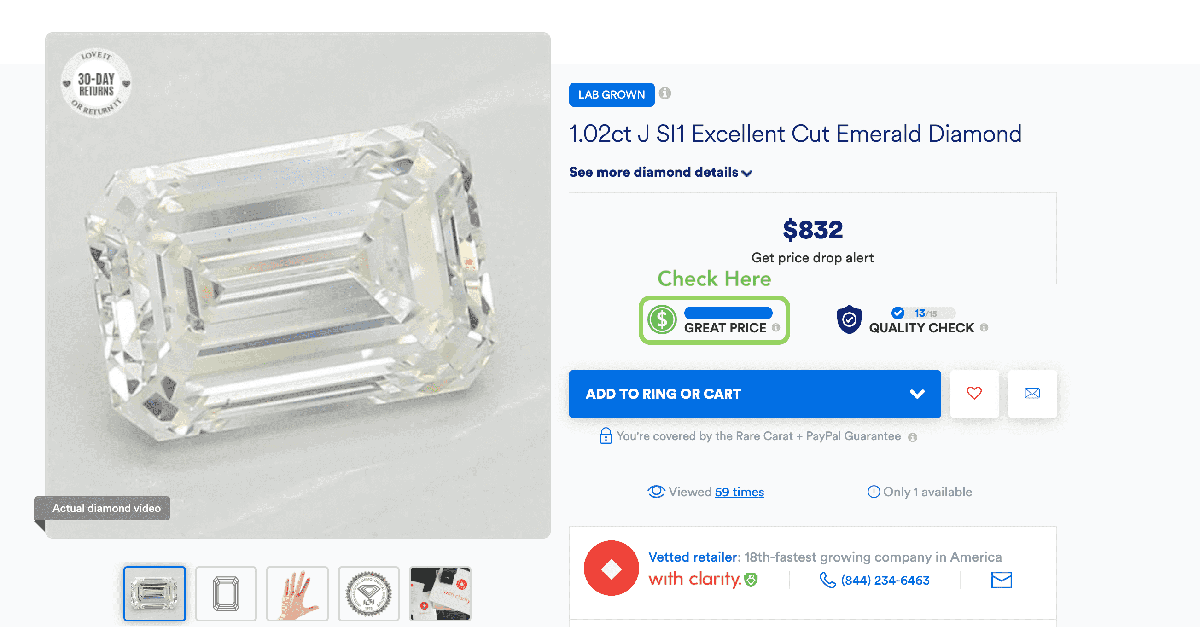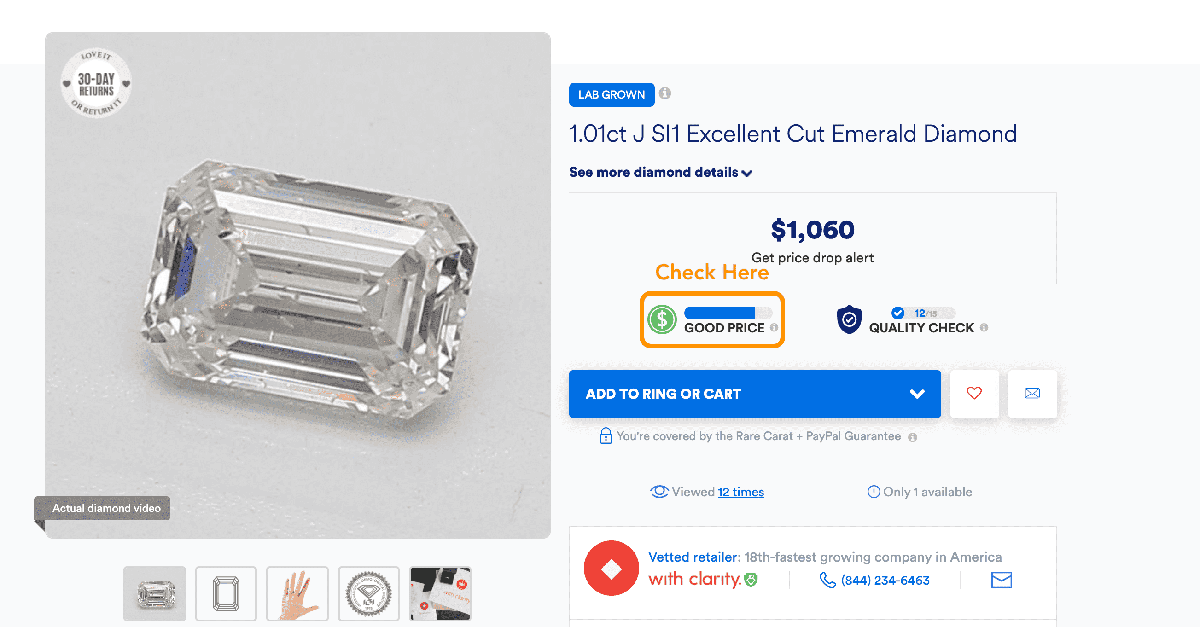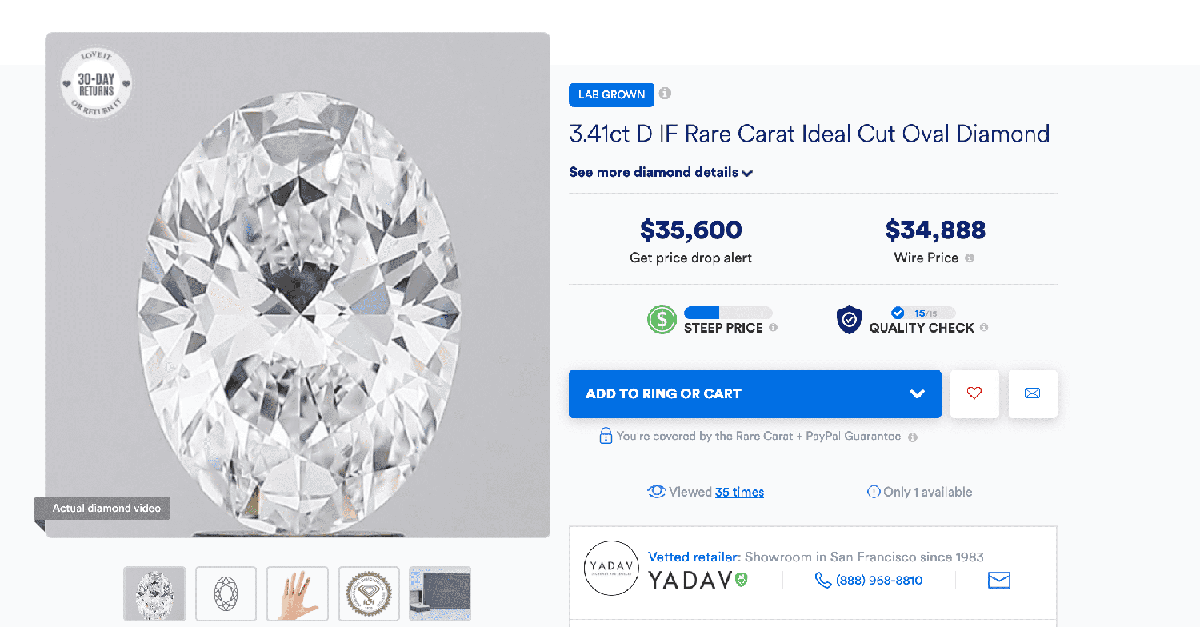CVD and HPHT: Modern Alchemy | Rare Carat
Remember how we tried to turn things into gold back in the middle ages? Well, we did it but with diamonds. But not only did we succeed in creating diamonds, we found two ways to do it. So, it is not an understatement to call the modern laboratory-created diamonds nothing less than a visual and engineering marvel to behold. Even better, the actual science behind is just as fascinating. Let me bring you on a journey to understand the two methods of creating diamonds.
HTHP: Monkey see, Monkey do
HPHT, which stands for high-temperature high-pressure, is the first method ever developed to create diamonds in a lab. In 1954, Dr. Tracy Hall and his team were the first to successfully produce it, after four years of trial and error. While their effort and determination were worthy of a movie adaptation, the concept could not have been simpler: copy what nature does. (*Sidenote: for all the Breaking Bad fans out there, in the episode "Peekaboo" when Walter White mentions the GE scientist who got a $10 savings bond for his scientific research that was Dr. Hall).
How does it work:
In a special anvil, pure carbon is placed in the middle. Then they proceed to press and heat the carbon so hard it yields and turns into a diamond (See I told you the concept was simple). The anvil imitates the natural environment (pressure of 1.5 million pounds per square inch and temperature of 5,000 degrees Fahrenheit) that diamonds form in. Once the environment achieves conditions, the carbon starts transforming into a diamond.
CVD: let it snow, let it snow, let it snow
If HTHP sounds amazing, CVD would sound straight up like magic. Imagine if a scientist walked up to you and told you that in a special chamber, you can microwave a gas into a diamond. Yeah, I did think he/she is a wizard and asking if the time machine comes with it too. But I am not making this up. People have been microwave nuking diamonds into existence since the 1980s.
How does it work:
Remember in your science classes, your science teacher probably talked about how snowflakes are formed. First, you need a seed crystal to kickstart the process. When you add moisture, the water molecule starts to crystalize layer by layer around the seed crystal creating the snowflake. And if enough of them fall from the sky covering the ground layer by layer, you might also get a thing called "snow day" and you don't need to see the aforementioned science teacher for a day.
Back to the CVD diamonds now. In a vacuum chamber, a carbon-rich gas is introduced to a microwave. Just like how the microwave can heat up my delectable hot pocket for dinner (no judgment), it also heats up our carbon-rich gases. When the temperature gets hot enough, the gas turns into a plasma and the gas molecules break down. The carbon atoms are floating in the vacuum and need to find a new place to call home. A diamond seed crystal just happens to be conveniently located in the chamber. So, all the carbon atoms rush in and set up shop. Just like snow, the carbon atom piles up layer by layer around the seed crystal and in about 2-3 weeks you have a sizable diamond ready to be cut.
Major Differences:
Now that we know how the laboratory diamonds are made. Let's compare them to find out how they are different.
Size:
The HPHT method is limited by the size of the anvil in which the diamond grows in. Once the diamond goes up against the wall of the reaction chamber, the diamond stops growing. The largest HPHT diamond recorded to date is a 15ct cushion. Compared to CVD diamonds, they can theoretically grow indefinitely. The largest CVD diamond created to date is 155ct. And if the scientist waited longer, the final result would be even larger.
Eco-friendly:
There is no surprise that in terms of energy, cost of an HTHP blows that of a CVD diamond out of the park. An HTHP anvil needs to maintain the extremely high temperature and pressure over a very long time. That is going to be one crazy electrical bill and environmental cost that someone has to pay at the end of the day. A CVD chamber, on the other hand, only needs to maintain a vacuum (no energy cost) and just needs to worry about the electricity used to keep the microwave going. Again, CVD is borderline magic and so it's much more eco-friendly than the HPHT method.
Price:
Remember the tremendous energy that you need to produce an HPHT diamond? You would expect that the older, less efficiently produced stones would be more expensive. But a bit of research on our database found the opposite. In reality, HPHT stones are becoming rarer to find. CVD is becoming the major player and HPHT is being phased out. What you see is that diamond merchants are determining the price based on the 4C's, not on the method of creation.
Take a look at this example: An HPHT stone being a lot cheaper at a 22% discount ($815 per carat) than a CVD stone ($1049 per carat).
What they are asking for is a lot more important than how the diamond is created. Check the Rare Carat Price Score - if the blue bar is full, and it's a great price, that's your friend.


What's better?: Appearance and Quality
There are some concerns about whether one method is better quality than the other. The concerns mainly come in the form of HPHT is more yellow or CVD having more inclusion because it is harder to control the growth. The answer is simple: look at your diamond grading report. The diamond report is the most direct and accurate way of comparing the quality of any two diamonds. A D color will always be better than an F and a VVS1 stone is always cleaner than an SI. Once you have the reports in front of you, the method of creation should only be considered a curious side note.
Still not convinced? Here is a G VVS1 CVD diamond (extremely clean).
, Rare Carat Ideal Cut](https://cldnr.rarecarat.com/rarecarat/image/upload/v1617275060/cms/Clean_CVD_d91f3a218e.png)
Here is a D IF HPHT diamond (yes best color and clarity for last).


CVD vs HPHT Diamonds FAQs